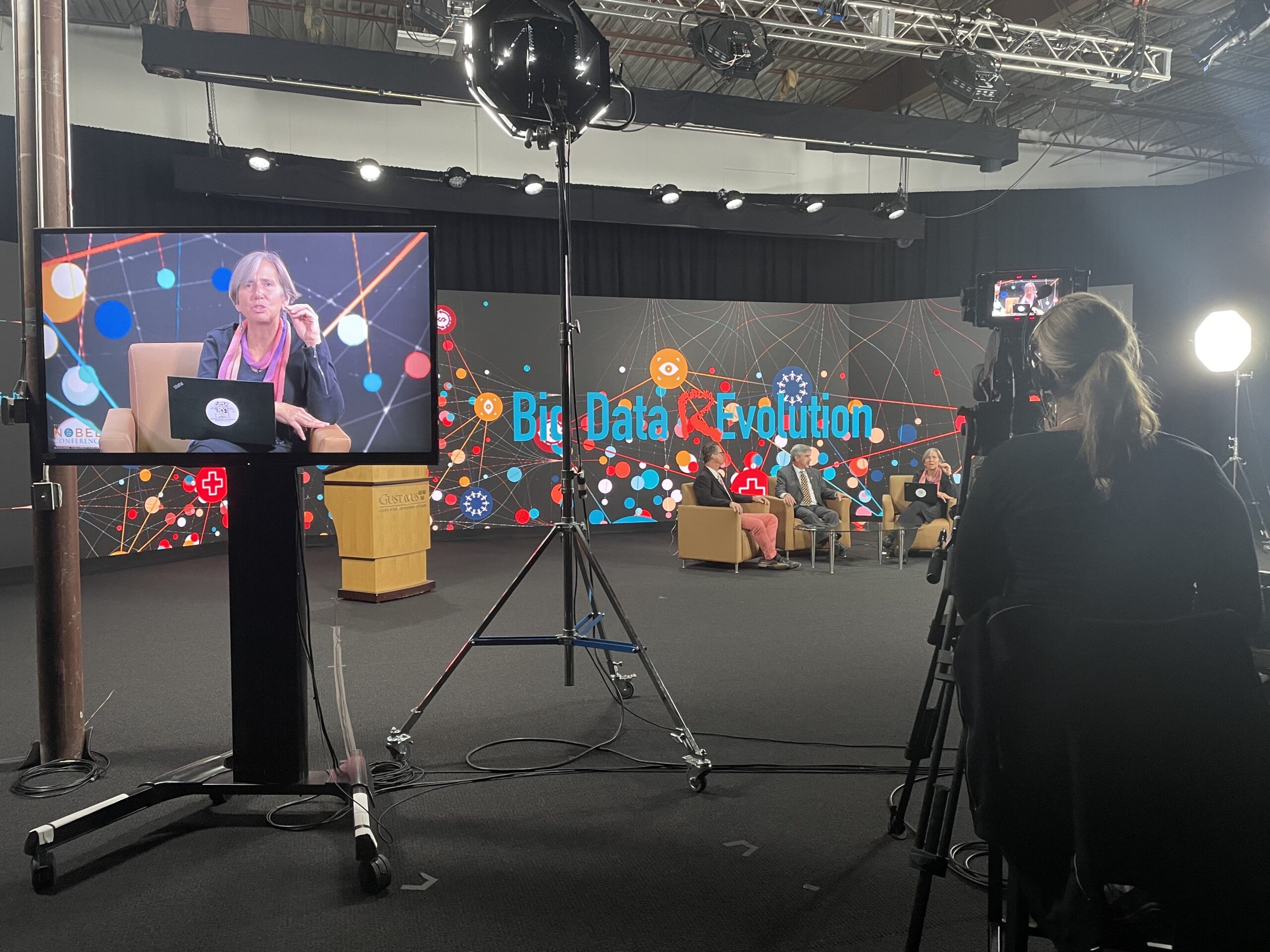Within a generation, nearly every piece of personal, scientific, and societal data has come to be stored digitally. With this information comes opportunities and dangers, as seven world-leading Big Data experts discussed at Nobel Conference 57: Big Data REvolution.
“For the most part, technologies are neither evil nor good,” said Pilar Ossorio, a law and bioethics professor at the University of Wisconsin. “They are implemented by human beings and institutions, and so we have to shape those institutions in the right ways.”
Some of those institutions, such as the Centre for Social Data Analytics founded by Rhema Vaithianathan, have used Big Data to address social problems for vulnerable populations. Specifically, Vaithianathan’s work focuses on predictive models that can aid frontline social workers who screen children at risk for abuse and neglect.
However, the very same predictive modeling can be used to create online division and polarization, cautioned Wendy Chun, founder of the Digital Democracy Institution. “These programs don’t simply predict the future,” she said of machine learning. “They also determine the future.”
Even when machine learning and artificial intelligence are used with good intentions, they can still carry flaws embedded in the program itself. Instead of black box models with algorithms too convoluted for people to understand, Duke University professor Cynthia Rudin advocated for interpretable models. Although their code is relatively simple, Rudin’s research has found that their accuracy is often comparable to their black box counterparts.
Interpretability for data scientists, however, doesn’t always translate to the general public. While some data science has impacted public policy, such as research on air pollution by Harvard professor Francesca Dominici, other discoveries fall prey to misinformation and public dismissal. Michael Osterholm, Director of the Center for Infectious Disease Research and Policy at the University of Minnesota and a member of the transitional COVID-19 Advisory Board under President Joe Biden, spoke on the challenges of using data to help mitigate the COVID-19 pandemic.
“We’re at an unprecedented place in the evolution of scientific investigation where alternative facts are accepted by many as valid for making critical decisions,” he said. “I’ve never seen anything like this in my 46 years.”
Similar concerns around ethics, regulations, and racial bias dominated the panel discussions, led by Nobel Conference 57 co-chairs Professor and Program Director in Public Health Karl Larson and Clifford M. Swanson Professor of Mathematics Tom LoFaro. This year’s majority-female panel also prompted discussions about diversity within the field of data science itself.
“We need to build models that include race and gender, and make sure that those models are equitable in their prediction,” said Harvey Mudd College mathematics professor Talithia Williams, whose work includes developing programs for young women of color to get involved in STEM.
From intellectual sparring between speakers from diverse fields emerged a deeper understanding of the ways in which Big Data and the models that come from it are imperfect tools, but ones with potential for growth.
“How can we use these models, and the flaws of them, in order to imagine a better future?” Chun challenged the audience and her fellow speakers. “Maybe the parts that are right and the parts that are wrong are exactly what we need to intervene in order to change the world.”
Watch the archive video of the lectures and panel discussions on the Nobel Conference website.

Leave a Reply